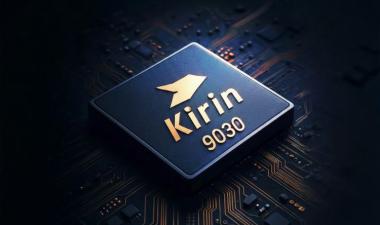AMD Zen 4 Adds AVX-512
Zen 4 increases IPC and runs much faster than Zen 3 owing to optimized circuits, a process shrink, bigger buffers, deeper queues, and a larger micro-op cache.

Joseph Byrne
First employed in the Ryzen 7000 PC processors, AMD’s new Zen 4 CPU raises both the clock rate and instruction throughput (IPC) of its predecessor while adding AVX-512 vector instructions. The company will also use it in laptop and server processors.
Zen 4’s high-level microarchitecture is the same as Zen 3’s, leaving unchanged the pipeline depth as well as the number of execution units and decoders. But AMD tackled myriad small bottlenecks, increasing IPC by 13% on an average of 22 workloads (about half of which were games). The biggest contributors to this increase were changes to the CPU’s front end, load/store units, and branch prediction.
Clock-rate speedups owe to a design shrink from 7nm to 5nm along with circuit optimizations. AMD raised the base speeds of the 16-core flagship Ryzens from 3.4GHz to 4.5GHz and the peak speeds from 4.9GHz to 5.7GHz. Accompanying these changes is a TDP increase from 105W to 170W, mirroring rival Intel’s raising of thermal limits to extract more clock speed.
Support for AVX-512 instructions improves performance on AI and high-performance-computing (HPC) workloads. Specifically for AI, AVX-512 adds operations on 8-bit values, which are common in inferencing, and works with the Bfloat16 data type, which is common in training. AMD reports that INT8 inferencing is 2.47x faster with its new Ryzen, factoring in the gains from AVX-512 and other changes. More architectural registers, per-lane masking, and additional scatter/gather instructions increase performance generally. The company kept Zen’s vector data path to 256 bits, spreading 512-bit operations over two cycles and thereby sacrificing performance to conserve die area.
The company will likely release Ryzen 7040 (Phoenix) laptop processors based on Zen 4 in early 2023. The first Zen 4 Epyc processors (Genoa) sampled in 2021, indicating a late-2022 or early-2023 release.
Free Newsletter
Get the latest analysis of new developments in semiconductor market and research analysis.
Subscribers can view the full article in the TechInsights Platform.
You must be a subscriber to access the Manufacturing Analysis reports & services.
If you are not a subscriber, you should be! Enter your email below to contact us about access.









